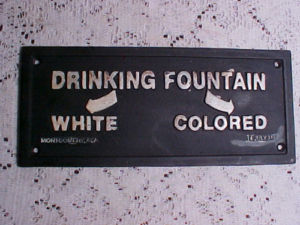A Democratic Vision: Teachers ordered to segregate by race in Evanston, IL
I was checking on the tax bill at The Wall Street Journal before turning in for the night (hoping for sugar plum tax dreams rather than coal) when I read this stunner:
Notable & Quotable: Teacher Segregation
‘Staff that identifies as individuals of color will meet in Room 226.’
From a Nov. 14 staff email from Adrian Harries, principal of Nichols Middle School in Evanston, Ill., obtained by the North Cook News:
During this Thursday’s staff meeting we will continue on our journey of equity with the focus on how to make Nichols a more equitable environment. This staff meeting we will be incorporating a new resource from Everyday Democracy as we explore the concept of equity through affinity groups. For those unfamiliar affinity groups are a group formed around a shared interest or common goal, to which individuals formally or informally belong. For this Thursday’s session our affinity groups will be based around racial identification, with one of our two groups consisting of staff that identify as individuals of color and our other group consisting of those that identify as White. Race is a lived experience so you should attend the group that best represents how you feel you live your life, racially. (Emphasis added.)
The Rational [sic]:
Affinity groups are an effective means through which people can explore and affirm aspects of their identity, as well as provide each other guidance and support for interacting with those who might not share, understand, or respect that identity. Although members of the group may share a common identity, it does not mean that everyone in that group has had the same experiences. . . .
Room Assignments:
Staff that identifies as individuals of color will meet in Room 226
Staff that identifies as white will meet in Room 126

I looked up “Every Day Democracy.” Here is their vision statement:
Our vision: Our ultimate vision is that local communities create and sustain equitable and inclusive public dialogue that leads to positive change. Such strong local democracies can form the cornerstone of a vibrant national democracy. In this kind of democracy: everyone’s voice has an opportunity to be heard, equally and respectfully; people of different backgrounds and views routinely work together to create equitable communities; elected officials have many opportunities to hear from everyday people; people have ways to work with decision-makers to create public policy) (Emphasis added.)
Sounds pretty innocuous until you remember what you would have learned in civics 101 if you were lucky enough to be in school when these ideas were still understood and taught: the U.S. is a Republic not a Democracy—and the choice was made quite consciously.
Recall what Benjamin Franklin said about our fledgling government? That this is a “Republic” which means there are limits on what the majority can impose on minorities (however defined—and it is not always about race) and limits on government itself. Not so with “democracies.”
How are we to keep our Republic if K-12 principals and teachers have been radicalized by the left-wing academies and trade unions like the NEA and AFT?
Issuing this kind of directive should be a fire-able offense.
How are we to protect teachers from this kind of workplace harassment? I wonder what the teachers did, what they said. What did bi-racial teachers do, stand in the hall? If they refused to segregate, did they get in trouble? Or written up?
If teachers are getting forcibly harassed and indoctrinated at work, who is teaching the kids? What are they learning? (Think the Edina Schools–is this a national syndrome?)
I have a young friend who was segregated by a (white, female) professor at college this year; white in the back, minorities up front. What is going on? We have to help these teachers if their unions are going to allow this (and probably encourage it).
The tax bill sounded pretty good; I wish I had stopped reading and gone to bed with my sugarplum.